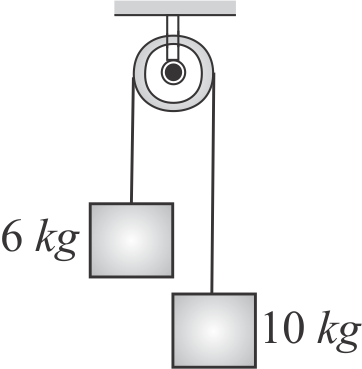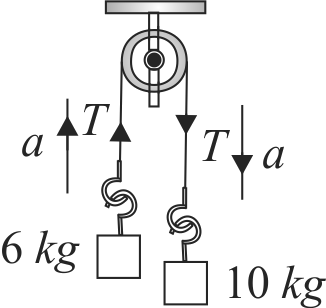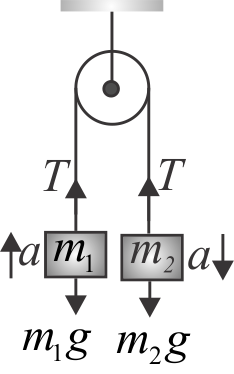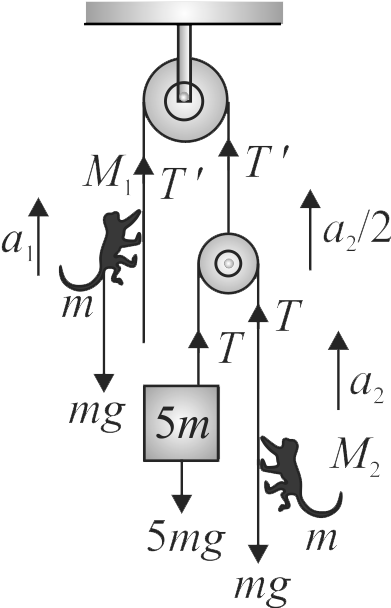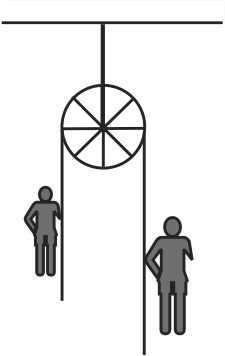363085
Two monkeys \({M_{1}}\) and \({M_{2}}\) of equal mass '\({m}\)' can climb strings of a pulley arrangement as shown in figure. Find magnitude of acceleration (in \({{m} / {s}^{2}}\)) of \({M_{1}}\) with respect to rope so that block remains stationary. It is given that \({M_{2}}\) is just holding the string. Assume pulley is frictionless and string is massless and inextensible.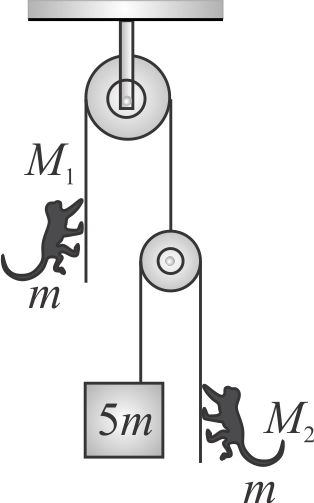
363085
Two monkeys \({M_{1}}\) and \({M_{2}}\) of equal mass '\({m}\)' can climb strings of a pulley arrangement as shown in figure. Find magnitude of acceleration (in \({{m} / {s}^{2}}\)) of \({M_{1}}\) with respect to rope so that block remains stationary. It is given that \({M_{2}}\) is just holding the string. Assume pulley is frictionless and string is massless and inextensible.
363085
Two monkeys \({M_{1}}\) and \({M_{2}}\) of equal mass '\({m}\)' can climb strings of a pulley arrangement as shown in figure. Find magnitude of acceleration (in \({{m} / {s}^{2}}\)) of \({M_{1}}\) with respect to rope so that block remains stationary. It is given that \({M_{2}}\) is just holding the string. Assume pulley is frictionless and string is massless and inextensible.
363085
Two monkeys \({M_{1}}\) and \({M_{2}}\) of equal mass '\({m}\)' can climb strings of a pulley arrangement as shown in figure. Find magnitude of acceleration (in \({{m} / {s}^{2}}\)) of \({M_{1}}\) with respect to rope so that block remains stationary. It is given that \({M_{2}}\) is just holding the string. Assume pulley is frictionless and string is massless and inextensible.

